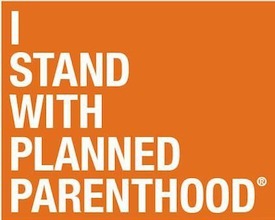It’s exactly what you’d expect.
The Texas Department of State Health Services has released the state’s 2014 abortion data after weeks of allegationsthat the agency had been intentionally withholding the numbers.
The 2014 data is significant because it is the first year to reflect the impact of Texas’ anti-abortion law, House Bill 2, on abortion providers and patients across the state.
The U.S. Supreme Court struck downparts of HB 2 as unconstitutional this week, in part because the court could not find evidence for Texas’ justification for the law — that mandatory hospital admitting privileges for abortion providers and hospital-like renovations for abortion clinics would increase patient safety. In their challenge to the law, Texas abortion providers argued that HB 2 would instead reduce access to abortion and would have a disproportionately negative impact on Texas Latinas.
According to the newly released numbers, the providers were right.
One of the most striking revelations is the change in number of medical abortions — a two-pill regimen that, under HB 2, was heavily restricted and required many more clinical visits than a surgical abortion procedure. In 2013, 16,189 Texans got medical abortions; in 2014, that number dropped to almost 5,000. (Medication abortions became easier to access earlier this year, when an FDA label change enabled more providers to issue the drugs under the law.)
The 2014 DSHS data also suggest the law had a disproportionate impact on Texans of color. In 2013, over 24,000 of Texans who got abortions were Hispanic; in 2014, that number decreased by 18 percent to under 20,000. The numbers also show a 7.7 percent decrease among black Texans who got abortions.
Overall, the number of abortions in Texas decreased by 14 percent from almost 64,000 in 2013 to almost 55,000 in 2014. The data also show that the number of abortions performed in clinics dropped by 21 percent from 2013, and the number performed at ambulatory surgical centers increased by 12 percent, reflecting the closure of half the state’s non-surgical center clinics after parts of HB 2 took effect in 2013.
The new numbers also don’t show abortion was any safer post-HB 2. For both 2014 and 2013, complication rates were negligible; the complication rates were 0.04 percent and 0.05 percent, respectively.
See here for the background. On the matter of medical abortions, the Austin Chronicle explains:
While more than 16,000 women took medication to terminate their pregnancies in 2013, less than 5,000 did so in 2014 – a stunning 75% decrease. The number of women going in for surgical abortion, on the other hand, rose about 3,000. The likely reason? HB 2 included a provision that forced women to ingest abortion pills following outdated, more expensive, and potentially more harmful FDA protocol. Some providers responded by discontinuing the service and it was reported that women were less eager to opt for medication abortion, which had forced them to take the pill in the doctor’s office rather than their homes. The FDA has since updated its guidelines. Planned Parenthood Central Texas centers, including the Austin location, saw its medication abortion rates drop to less than 1% from 40% before HB 2.
See here for more on that. Since the FDA updated its guidelines, use of the abortion pill has risen sharply, which is exactly what you’d expect since taking a pill is safer, cheaper, and more convenient than going to a medical facility for an invasive procedure. Of course, women were still seeking medical abortions after HB2’s passage, they just were doing it on their own, without any assistance from a medical professional. Because HB2 was all about their safety, don’t ya know.
More women traveled out of state to obtain abortions as well.
The statistics also show a slight increase in the number of pregnant persons who traveled out of state to obtain abortion care. The number of abortions that took place “out of state” was 754 in 2014, compared to 681 in 2013.
However, data from other states suggest a much larger increase during that time period. As Rewire previously reported, statistics from Arkansas, Kansas, Oklahoma, and Louisiana appear to indicate at least 1,086 patients traveled to those states from Texas to obtain an abortion in 2014.
Basically, everything is as abortion rights activists said it would be under HB2, and whatever the reasons for the delayed release of this data, there’s no question that the timing was convenient for the state. Thanks for not buying the BS, Supreme Court. The Trib and the Chron have more.


So I am just asking are we happy there are fewer abortions or are we mad?
I’d like to see the corresponding figures about how many more or less babies are born on welfare, i.e. supported by the taxpayers. If fewer abortions means more welfare payouts for mother and child for 18 years, then this policy is doing no favors for the taxpayer.
This reminds me of the Purge. Maybe we should give free abortions, I mean reproductive health care, to all women who can’t afford it.